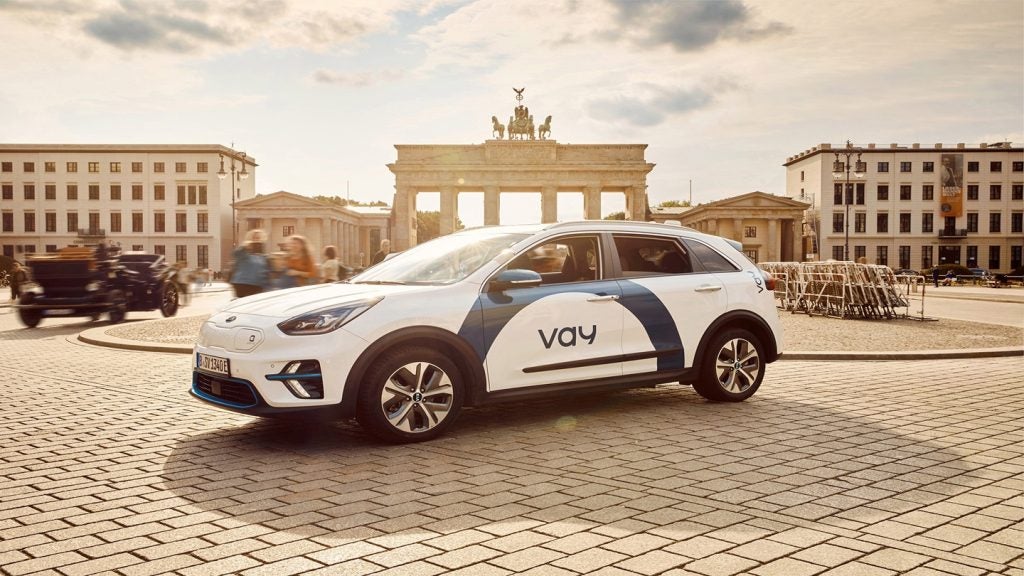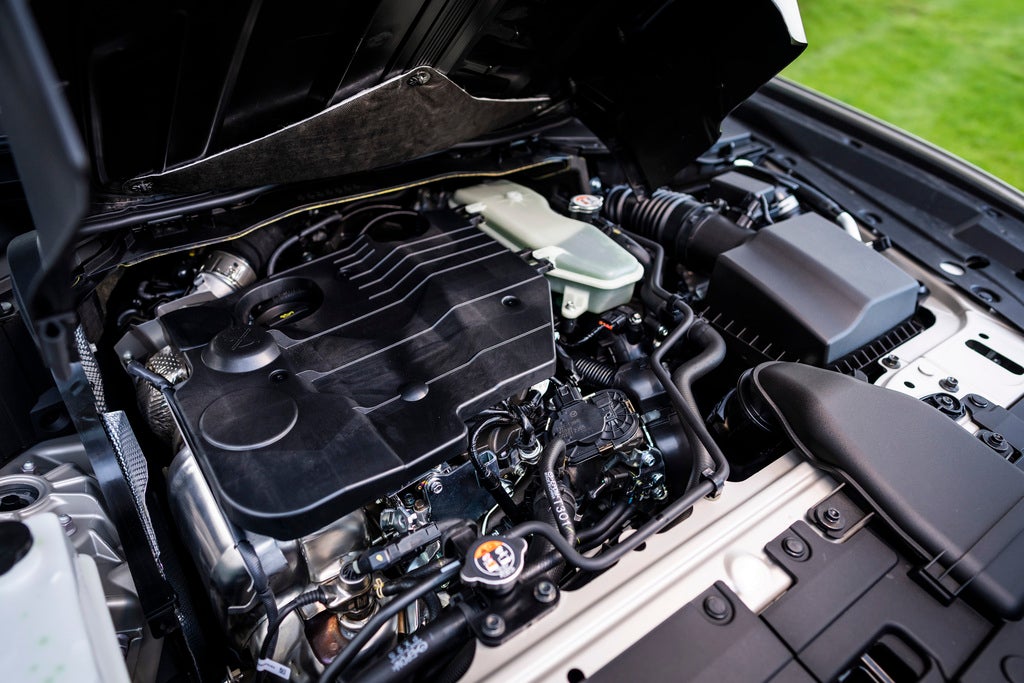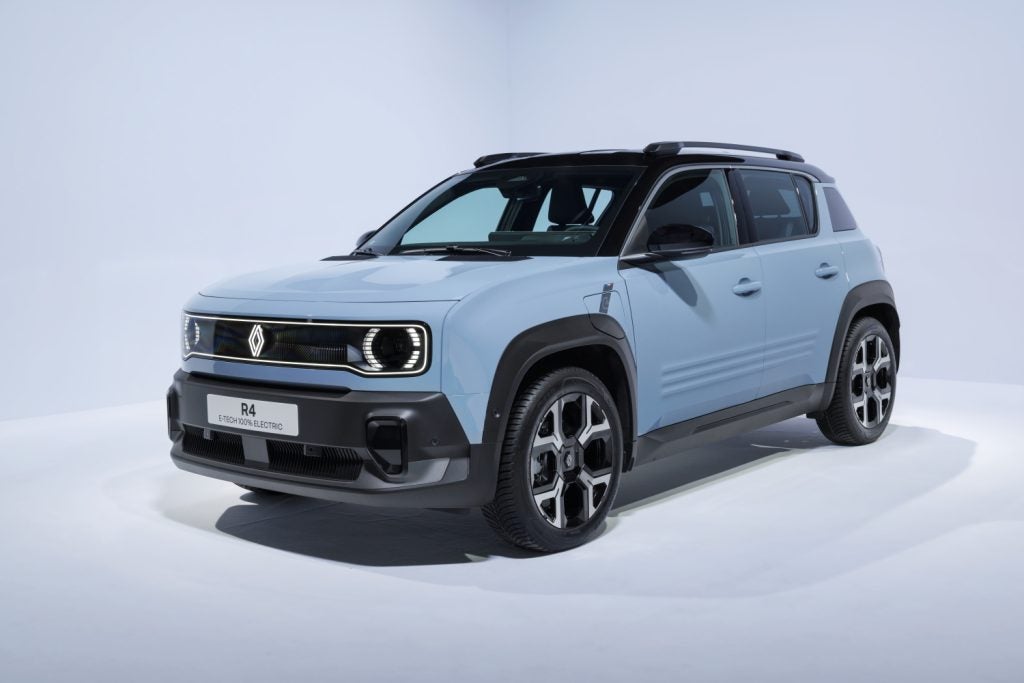 Sustainable and clean energy for the future is a central concern for carmakers and their research departments, as well as politicians. At a recently held symposium held in Sindelfingen, Dr. Hans-Joachim Schöpf, Member of the Executive Management Panel, Responsible for Mercedes-Benz Passenger Car Development, set out the view from DaimlerChrysler. His presentation, which provides a good summary of the political context, as well as the research challenges facing carmakers, is reproduced here.
Sustainable and clean energy for the future is a central concern for carmakers and their research departments, as well as politicians. At a recently held symposium held in Sindelfingen, Dr. Hans-Joachim Schöpf, Member of the Executive Management Panel, Responsible for Mercedes-Benz Passenger Car Development, set out the view from DaimlerChrysler. His presentation, which provides a good summary of the political context, as well as the research challenges facing carmakers, is reproduced here.
The securing of energy supplies is one of the key issues facing all national economies, especially with regard to mobility and infrastructure. In the transport sector, today’s energy requirements are met almost entirely by gasoline and diesel fuel. For a globally active automotive enterprise, the energy of the future is an issue of fundamental significance.
Since the report of the “Club of Rome” from 1972 (‘The Limits of Growth’) and the oil crisis of the mid-70s at the latest, there has been general awareness that oil supplies are limited. Much more important, however, is the fact that in the energy sector, we rely to a substantial extent on a network of international interdependence. And over the past few years, CO2 emissions and climate protection have also been the subject of much discussion.
The political dimensions of the fuel issue
The questions of how long oil supplies will last and how oil prices will develop are the subject of controversial debate, in which varying conclusions can be drawn depending on the assumptions on which they are based. In the USA, more or less constant gasoline prices are taken just as much for granted as are steady price rises in Europe. But the most pressing question we must ask ourselves is not when the last drop of oil will be tapped; this can in fact even obscure the real challenge facing the future of energy supplies: The economic and political interdependences must be assessed, climate protection measures observed and valuable natural resources protected in order to retain the basis of life for coming generations.
How well do you really know your competitors?
Access the most comprehensive Company Profiles on the market, powered by GlobalData. Save hours of research. Gain competitive edge.

Thank you!
Your download email will arrive shortly
Not ready to buy yet? Download a free sample
We are confident about the unique quality of our Company Profiles. However, we want you to make the most beneficial decision for your business, so we offer a free sample that you can download by submitting the below form
By GlobalDataWith a view to future mobility, therefore, the search is on in earnest for a fuel which is available in inexhaustible supply, burns free of noxious emissions and has a high energy density. Such a fuel must also be accepted by society and be able to be produced at competitive prices. To achieve a sustainable energy economy, this fuel must be produced by regenerative means in the long term.
Obviously, no company – and definitely no automotive manufacturer – can fulfil these requirements single-handedly. Rather,
“what is required is cooperation between politics and industry” |
Requirements in the Triad markets
With regard to legislation for consumption and emission, the political outline conditions in the Triad markets are showing uniform tendencies, although the methods used in measurement are not comparable and in fact partly contradictory. In Europe, reductions in fuel consumption and emissions are at the centre of attention. The self-imposed requirements of the European Automobile Manufacturers Association (Acea) and the EURO standards are now a matter of routine to the automotive industry. In the USA, the emphasis is on emissions: In some states, such as California, specific quotas of ZEVs (zero emission vehicles) or SULEVs (super low emission vehicles) are prescribed.
In Japan, the measures are concentrated on reducing fuel consumption and particulate emissions: As in the USA, particulate emissions are subject to extremely low limits, and this is a major hindrance to the market viability of diesel engines for passenger cars powered by present-day technology. The automotive manufacturers are called upon to resolve this conflict of aims with its partly contradictory requirements.
Lowering fuel consumption and emission levels in road vehicles
The considerable progress made over the past few years is borne out by the fact that since 1978, DaimlerChrysler has reduced the overall fuel consumption of its passenger cars registered in Europe by 30 percent. DaimlerChrysler is also already offering two vehicle models with a consumption of better than 5 liters/100 km (47.0 mpg), and the diesel-engined smart is currently the most frequently sold 3-liter car (3.4 liters/100 km, or 69.2 mpg, on the EURO cycle). Since the seventies, progress of a similar magnitude has also been made in reducing noxious emissions. With regard to emissions, favourable progress is thus being made in reducing noxious emissions; and much has also already been achieved with regard to the emission of CO2. Nevertheless, there is still much to be done here. In the long term, the solution can only be reached in the development of regenerative fuels and alternative drive systems. But how does an automotive manufacturer enter the new world of so-called ‘sustainable mobility’? The principal aim must be to modify the vehicles themselves to bring about a rapid and effective reduction in fuel consumption and emissions. For this reason, the company is intensifying endeavours for the immediate optimisation of the conventional drive technologies, i.e. gasoline and diesel engines along with the corresponding transmissions as well as injection and exhaust treatment systems. Even after more than a hundred years of automotive development, there is still considerable potential in this area. And in view of the figure of 54 million new vehicles and engines produced annually throughout the world, this is the largest and most obvious field of activity.
The need for clean fuels
It is obvious from the very high standard of exhaust treatment already achieved that further steps towards even cleaner exhaust – and thus towards the improvement of air quality – can only be made with cleaner fuels. The legally prescribed emission values over very long distances – up to 160,000 kilometres (100,000 miles) – call for exhaust treatment systems that remain stable over an extended period of time; this can only be achieved with ‘clean’ fuels.
What do we mean by ‘clean’?
The ‘clean = unleaded’ campaign for gasoline is already up and running in many parts of the world – but there are still over a hundred countries (e.g. in Africa) in which there is still much need for action in this matter.
“An urgent requirement today is sulphur-free fuel – both diesel and gasoline” |
The conclusion to be drawn here is that the stringent limits for clean exhaust also necessitate universally available clean fuels. However, the only contribution the automotive industry can make here is to increase technological awareness; the political implementation is largely up to the German and European authorities.
Low-carbon fuels
The aim of producing as little of the climatically relevant gas CO2 as possible in the combustion of fuel within the engine can be achieved to a certain extent with so-called low-carbon fuels. Fuels today consist of hydrocarbons – and this will remain largely unchanged over the coming 20, or in fact even 30 to 40 years. The energy is derived through oxidation firstly of the hydrogen content to produce water, and secondly of the carbon content to produce CO2. Natural gas (methane), a low-carbon fuel with the formula CH4, has the most favourable carbon content; aromatic and unsaturated hydrocarbons, on the other hand, are classed as high-carbon. These are present to a significant extent in the fuels in widespread use today. The use of low-carbon fuels, such as natural gas, can thus help reduce CO2 emissions, especially in regions where natural gas is abundantly available.
Natural gas and ‘gas-to-liquid’ fuels
There are currently large quantities of natural gas available worldwide, which however is often burned off, especially in remote petroleum-producing countries such as Malaysia or Nigeria. Whilst the automotive industry is leaving no stone unturned in bringing about minor improvements with regard to CO2, the burning off of natural gas produces carbon dioxide in quantities that match the CO2 emission of road vehicles in large metropolitan areas. Vehicles powered by natural gas can already today be designed in such a way that their load volumes are only minimally affected. And as long as they are powered bivalently, considerable expansions of the operating radii up to 50 percent are possible. In order to tap the potential of natural gas to the full, preparedness to make investments in the appropriate infrastructure must be promoted. A further suitable application of natural gas would be the production of liquid fuels: ‘Gas to liquid’ is the catchword here. In the Fischer-Tropsch synthesis process, it is possible to produce an excellent sulphur-free diesel fuel that is classed as ‘low-carbon’ since it contains no aromatic or unsaturated hydrocarbons. DaimlerChrysler is undertaking measures together with the petroleum industry to expedite the economical development of this fuel. The German federal government has exempted natural gas from petroleum tax until 2009, and the petroleum industry intends to install a natural gas filling station network in Germany by 2006. Already today DaimlerChrysler offers products, especially commercial vehicles, for operation with natural gas. We shall soon also be launching passenger cars with bivalent natural gas operation on the market.
Regenerative fuels
The energy of the future, however, will be provided by regenerative processes, e.g. from biomass fuels or from wind and solar energy plants. Solving the problem of CO2 emissions can only come a decisive step closer to reality once these energy forms become viable. DaimlerChrysler recently announced a research partnership with the CHOREN company, aimed at economically producing diesel and methanol from wood refuse. The amendment to the Petroleum Tax Act, for the exemption of biogenically produced fuels, is expressly welcomed. Further options are methanol and ethanol, which can also be synthetically produced, for instance from natural gas or regeneratively from biomass. Various blends of synthetic and bio-fuels with conventional fuels are also conceivable. With these synthetically or regeneratively produced fuels, the supply of fuels can be intensified and the fuel quality enhanced, so that emissions can be reduced to even lower levels. A further advantage is that the existing infrastructure and drive technologies will only have to be modified, and not fundamentally redesigned. For all consideration of the fuel of the future, we must of course not neglect the ‘well to wheel’ overview. In other words, we must take a holistic view of the entire process chain from fuel production, via the infrastructure, right up to on-board application. Frequently, a mere “tank-to-wheel” approach is adopted, which however is of little benefit to the objective of providing energy for the future.
Hydrogen as an energy medium
Today, hydrogen is generally regarded as the energy medium of the future. This of course assumes that its potential can also be realized in mobile applications; however, the matters of storage and infrastructure are yet to be resolved worldwide. Hydrogen is fundamentally suitable for use both in the internal combustion engine and in the fuel cell. In view of its greater potential with regard to the efficiency factor,
“DaimlerChrysler already resolved in the early 1990s to concentrate on the fuel cell as an alternative drive concept” |
Conclusion and outlook
In the immediate future, and no doubt for the coming 30 years, the optimisation of conventional drive technologies such as gasoline and diesel engines will be at the forefront. In order to fully tap this potential, clean fuels are called for which are free of aromatic compounds and sulphur. Natural gas and the ‘gas to liquid’ diesel fuel synthetically derived from it, along with other low-carbon fuels, will play a role in further reducing CO2 emissions. In a further stage, the conventional fuels will be supplemented by fuels regeneratively derived from biomass or from solar, wind and water energy plants. In drive technology, hybrid vehicle concepts such as the starter-generator will bring further benefits regarding consumption and emissions; they can mark the beginning of a transition phase towards purely electric drive. In the long term, the fuel cell promises the highest energy efficiency and is a key technology for the future. In combination with regeneratively produced fuels, it represents the ecologically most beneficial solution for the mobility of the future. Already today, large-scale field tests are being carried out with fuel cell drive units at DaimlerChrysler, and this technology is being further developed.
We regard pure hydrogen as promising, as long as it is produced by regenerative means and the problem of storage can be solved. Methanol, as a liquid fuel and hydrogen medium, is a further option. Sodium borhydride as a hydrogen medium is currently being subjected to tests by the Chrysler Group’s researchers. Later this year the company will already be presenting the first 30 Mercedes-Benz Citaro fuel cell buses, which are to go into service next year in ten European cities. In 2004, a small fleet of Mercedes-Benz A-Class cars powered by a fuel cell will be seen on the roads of Europe, America and Asia. According to current estimates, fuel cell drive systems will be able to supplement or gradually supersede conventional drive technologies from 2010 onwards.
DaimlerChrysler sees the road to the energy of the future as an evolutionary process which takes into consideration both economic and ecological factors. This approach must also be acceptable to the customer and conform to the various political conditions of the markets. Although the world of alternative energy forms and of alternative drive systems still lays some way ahead, the appropriate technologies must be developed today. DaimlerChrysler intends to assume a pioneering role here, and as the world’s oldest automotive enterprise is also making a decisive contribution to the mobility of the future.
Source: DaimlerChrysler Innovation Symposium







